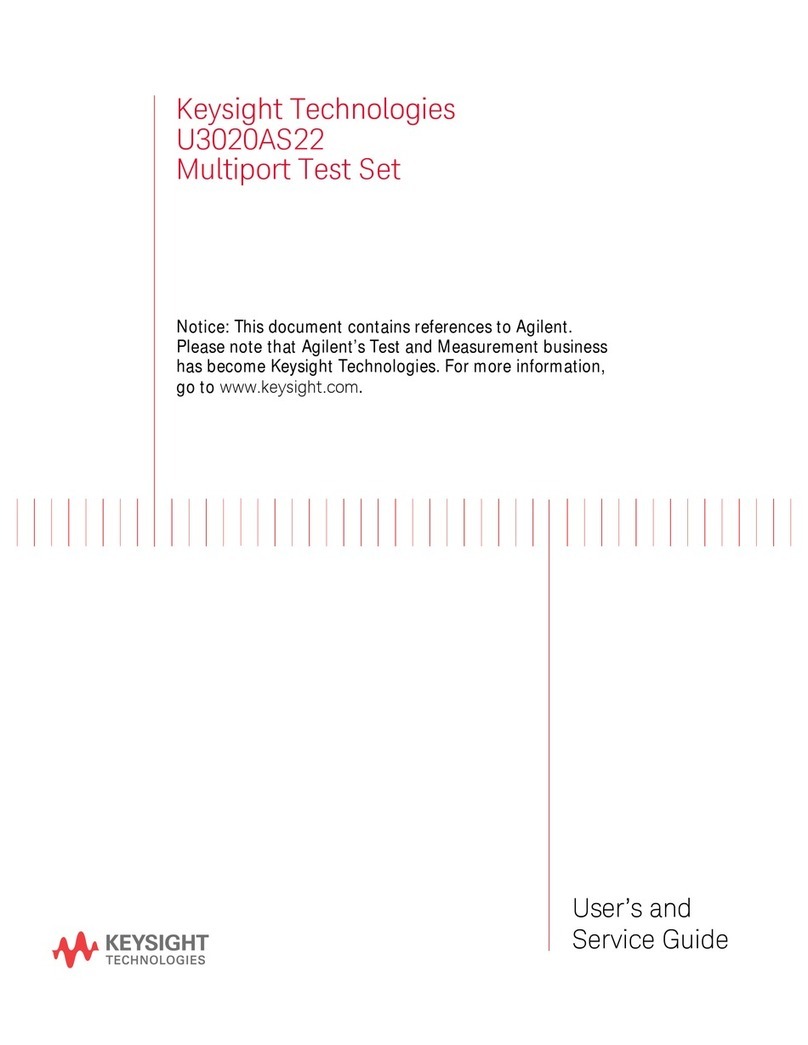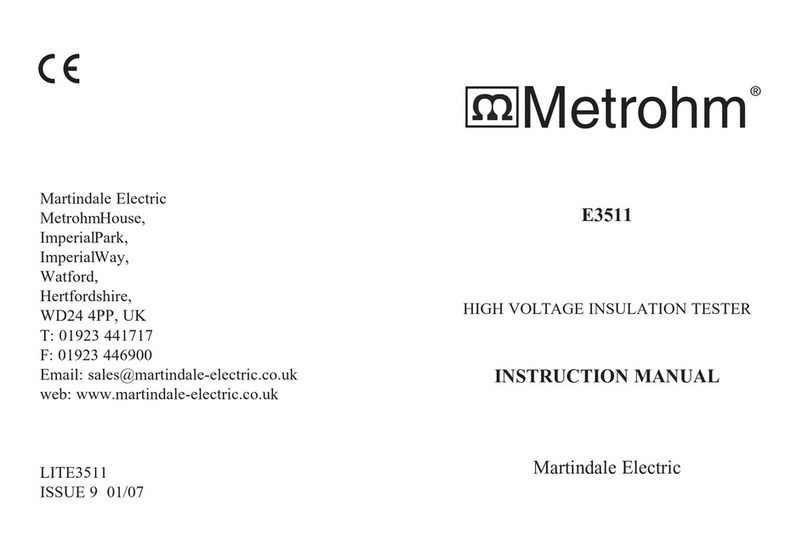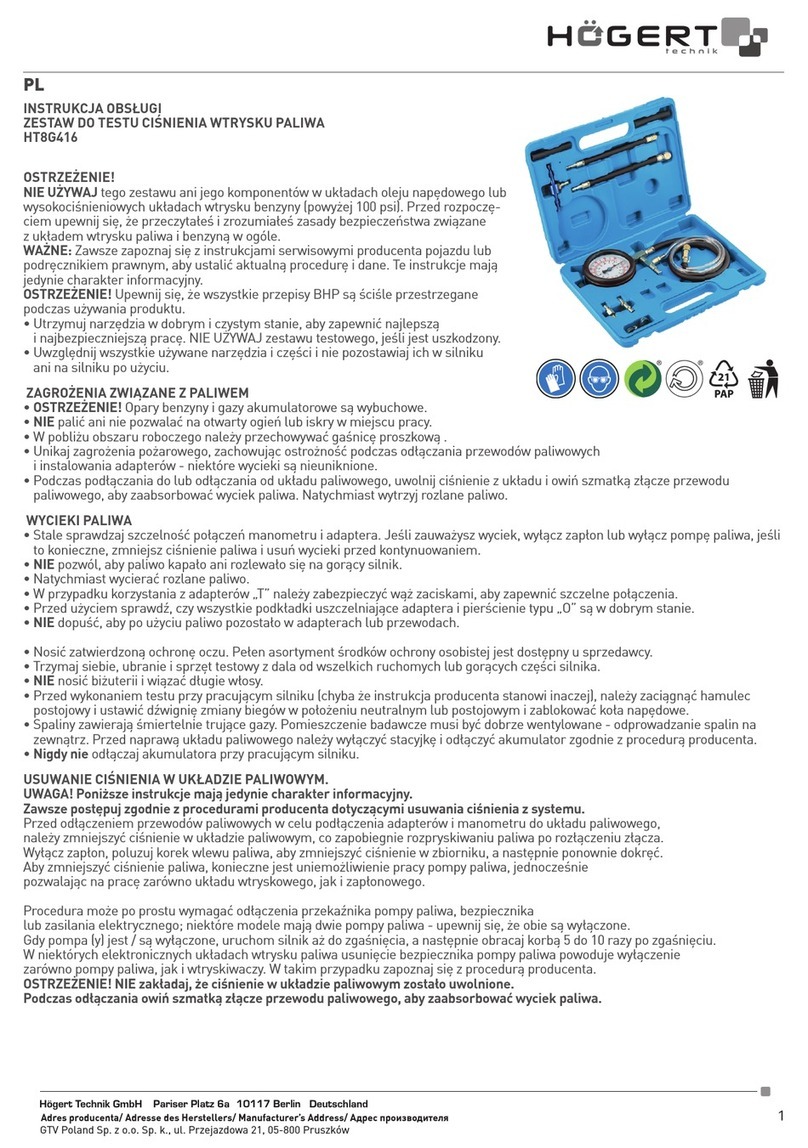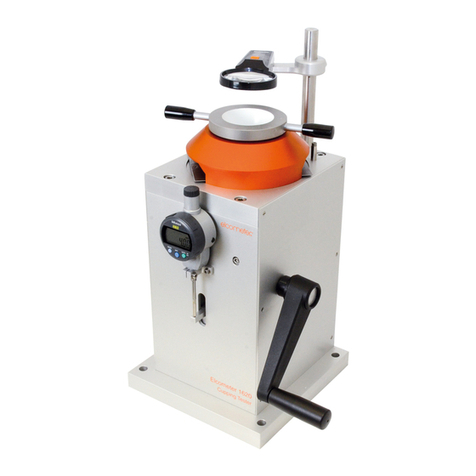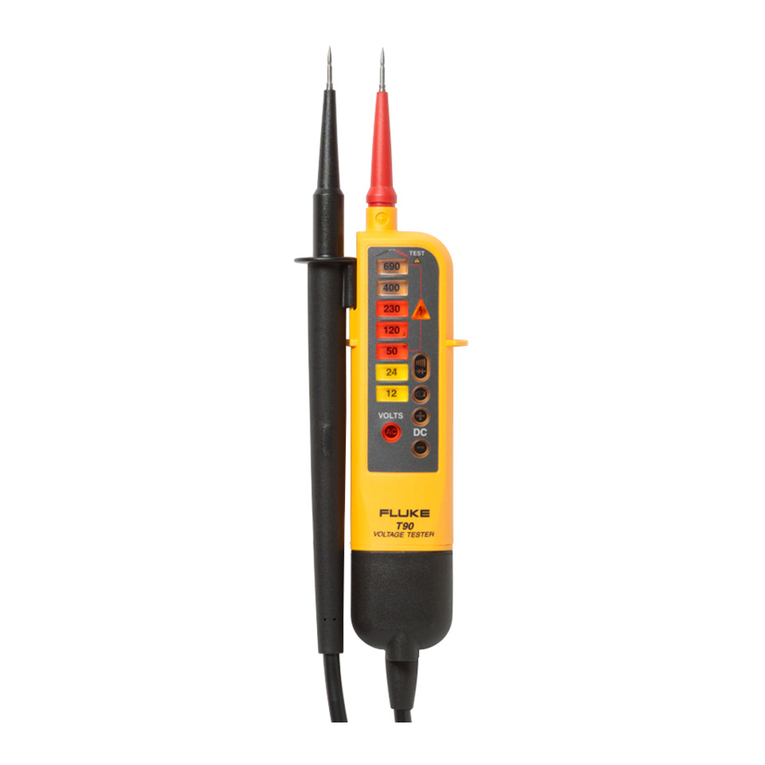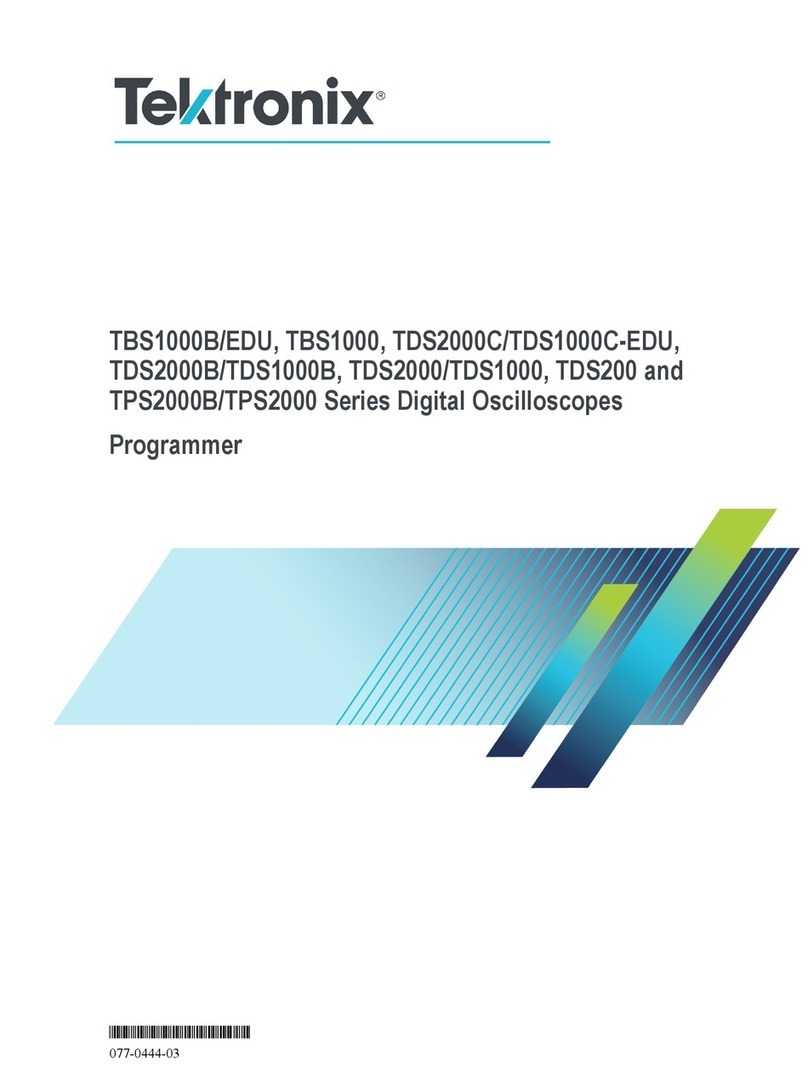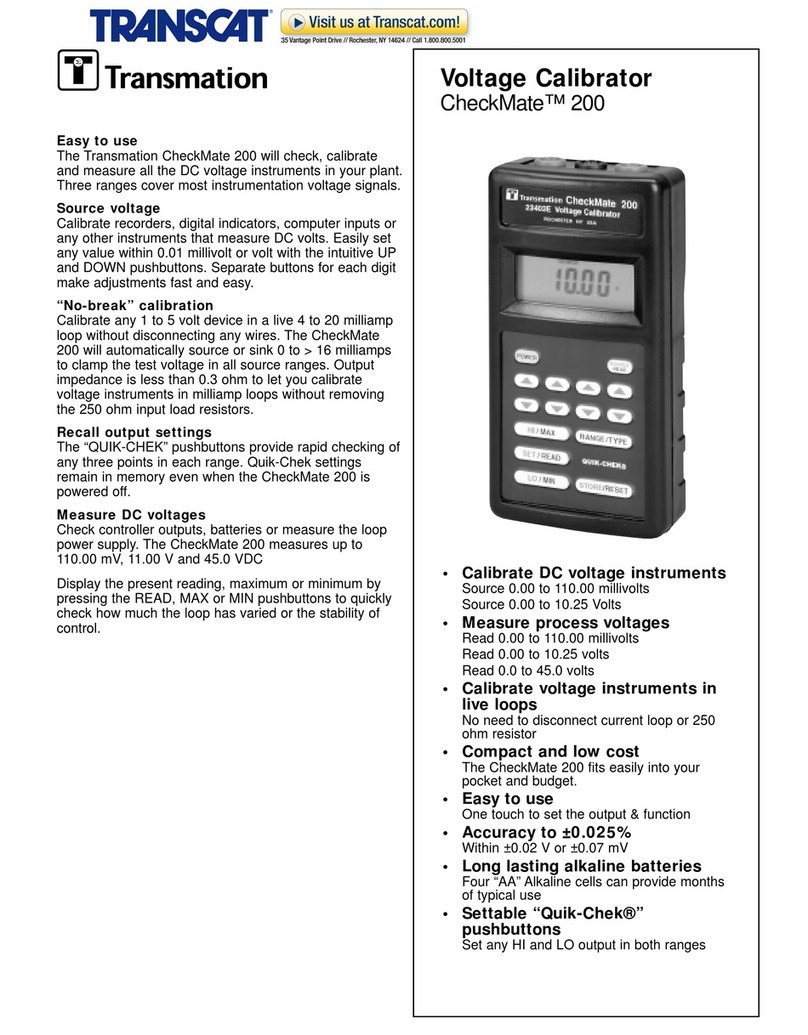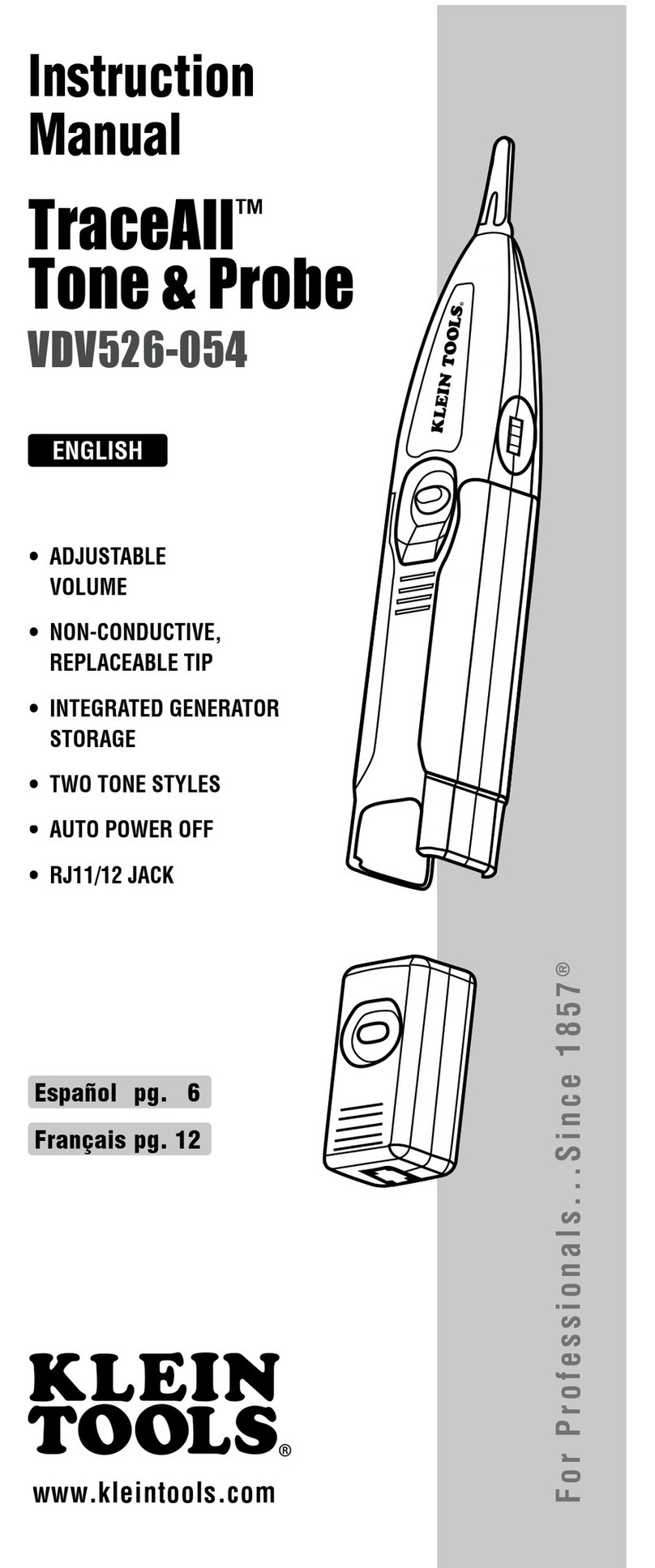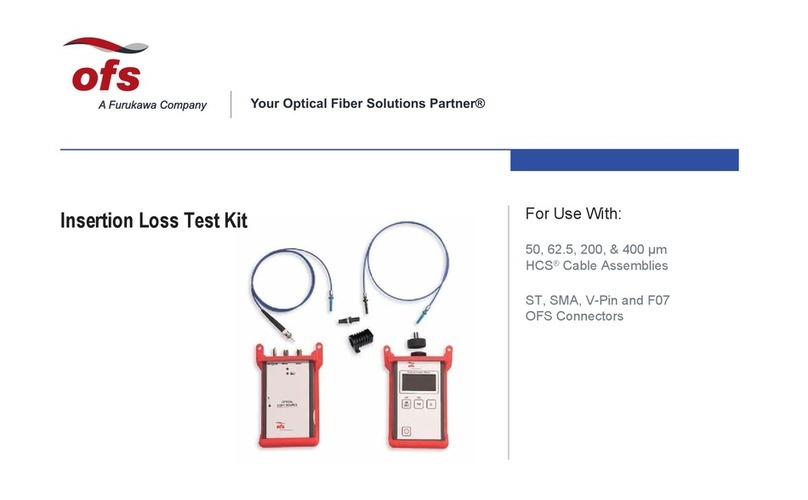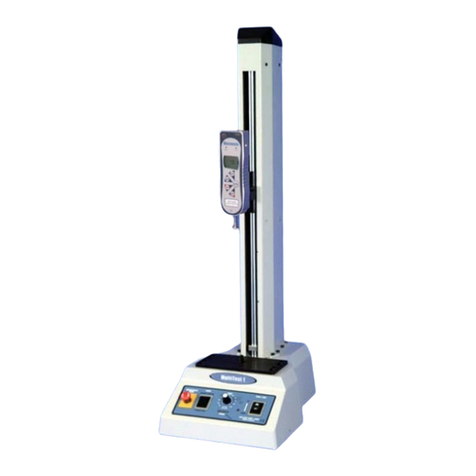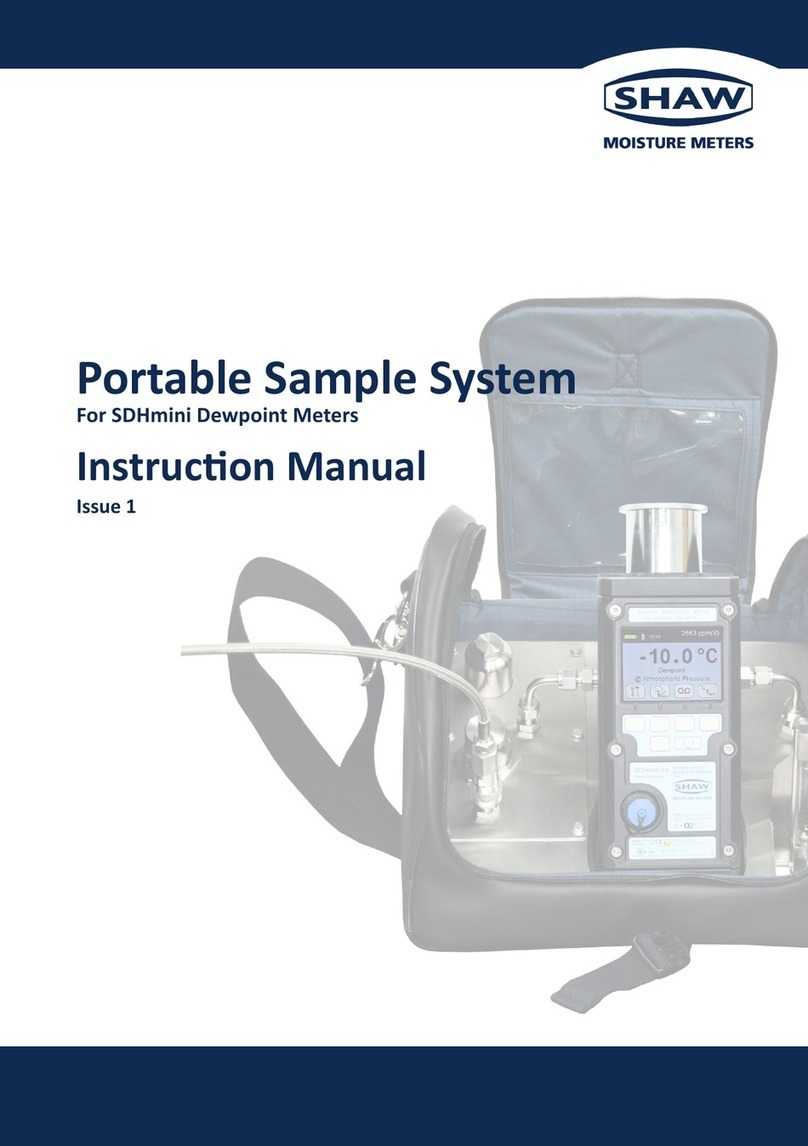koslow The Alloy Scout 1545 User manual

2
Parts List
1
The Electro-Spot Model 6 Alloy Extractor
1
Moly Cartridge No. 50
1
Nickel Cartridge No. 60
1
Chrome Cartridge No. 70
50
Moly Test Strips 0500
50
Nickel Test Strips 0600
50
Chrome Test Strips 0700
1
Instructions & SDS
1
Battery Pack with three cells
1
Metal Standard Sample – SS 316
1
Wrist lanyard
2
Packing Foam
1
Hard Kit Case
Table of Contents
INTRODUCTION......................................................................................................................................................................................... 3
SAFE HANDLING....................................................................................................................................................................................... 3
SELECTING A WORK LOCATION ............................................................................................................................................................ 4
INITIAL TEST PREPARATION................................................................................................................................................................... 4
QUICK INSTRUCTIONS............................................................................................................................................................................ 5
THE ELECTRO-SPOT MODEL 6 PROBE.................................................................................................................................................. 6
THE PROBE ............................................................................................................................................................................................... 6
THE CURRENT INDICATOR LED.............................................................................................................................................................. 7
TEST STRIPS............................................................................................................................................................................................. 7
THE DAB CARTRIDGE .............................................................................................................................................................................. 8
THE QUALIFICATION STANDARD METAL .............................................................................................................................................. 8
COMPOSITION OF STAINLESS STEEL 316............................................................................................................................................. 8
TESTING SMALL PARTS .......................................................................................................................................................................... 8
BATTERY RECHARGING AND INSTALLATION....................................................................................................................................... 9
MAINTENANCE AND STORAGE............................................................................................................................................................... 9
TROUBLESHOOTING.............................................................................................................................................................................. 10
RE-ORDER ACCESSORIES INFORMATION .......................................................................................................................................... 11

3
Introduction
Thank you for selecting The Alloy Scout (Part No. 1545) Stainless Steel Identification Kit. This rapid
spot test kit precisely determines the presence of three common elements alloyed in stainless steels:
chromium, nickel, and molybdenum. It is especially effective at sorting between non-stainless, SS 304,
and SS 316. If the formulated test paper turns a prescribed color, the results are positive for the
corresponding element. No other element will interfere or produce the prescribed color reaction. Spot
tests are easier, faster, and cheaper than chemical analysis in sorting stainless steel scrap or inspecting
upcoming and outgoing stock.https://youtu.be/d-C7DDK7SJI
Use this kit with the utmost confidence. It is an ASTM approved method. The Scout is the first bottle-
free chemical spot test kit. Koslow’s patented Dry-Spot Technology utilizes age-old and acceptable
chemical methods but eliminates the need for bottles of solutions. Instead, cartridges dispense very
small controlled quantities of color reacting reagents.
ASTM 1476-95 is the standard guide for metals identification, grade verification, and sorting.
The Scout kit includes a small metal standard of stainless steel 316 to be used as a testing reference.
Working side by side with a known sample will show what a positive result looks like before attempting
tests on lesser-known materials. It also assures the user that the equipment and procedures are
working as they should.
The Alloy Scout (Part No. 1545) is designed to be used by inspectors, stainless steel fabricators,
process and quality control engineers, and other finishing technicians are working in applications where
verifying the grade of stainless steel is critical. With colorful results, non-technical personnel can easily
inspect parts as part of a routine quality control program. This kit can be used on many types of metal
surfaces: large tanks, pipes, welded areas, wire, and even small parts (1 sq. cm.).
Read this manual before operating your kit. This manual functions in two ways, firstly as a step by step
guide to help the user operate the instrument and secondly as a handy reference guide. This instruction
manual is written to cover as many anticipated questions as possible concerning the Alloy Scout. If
there are any doubts about the use of this tester, do not hesitate to contact a Koslow Technical Support
Representative at 011 (201) 541-9100. We want you to be happy and satisfied with your results.
Safe Handling
•We care about you. Please always wear safety equipment when using Koslow products.
•In handling any chemical, good industrial hygiene practices are imperative.
•Internal kit parts may be hazardous. Caution should be exercised in kit use.
•Use industrial Personal Protection Equipment (P.P.E.) such as gloves and eye protection.
•Use the wrist strap lanyard to prevent dropping the probe in sensitive areas.
•Work outside or in a well-ventilated area. Never work in a confined space; some vapors can be
irritating.
•Wash hands after kit use and before eating.
•Do not perform tests on energized equipment. Remove from power before metal testing.
•For general industrial safety and cleanliness, conclude test by wiping the tested metal surface
with a soft, damp cloth to remove any residual solutions. The user should then clean, condition
or sterilize as required for the intended final application.
•Only use the Scout Kit for metal testing purposes; consistent with instructions.
•Dispose of kit contents according to local regulations.
•Review all pictograms and other safety documents.

4
Selecting a Work Location
Perform work on a chemically resistant surface. Use a workspace with access to a properly ventilated
airflow. Work in sufficient lighting to view color test results. Pink-tinged fluorescent lighting can give
poor color visibility; whereas daylight provides excellent visibility to color perception. This kit is for
industrial and commercial use only. Keep away from children.
Initial Test Preparation
First time testing instructions: Please read and understand the instructions and safety before trying a
test. Call customer service with any questions.
1. Unscrew the Top Cap of the probe.
2. Insert the Dab Cartridge into the tube with the tip cap down. The tip will protrude through the
hole at the end of the cartridge.
3. Insert the battery pack with the arrow pointing up. The battery pack contains three Lion batteries.
(Details page 8)
4. Rotate clockwise to close the top cap. Be careful not to force or cross-thread the screw cap.
5. Take out a few Test Strips for the type of test to perform. Keep not used papers in the bag to
ensure freshness.
6. The dry stainless steel test metal must be free of grease, rust, dirt or paint.
7. The Cartridge Tip is never to make direct contact with the test metal. Always place Test Paper
on the metal before testing.
8. First, perform a test on the standard provided.
9. Follow the Quick Instructions on page 5.
10.Conclude test by wiping the tested metal surface with a soft, damp cloth to remove any residual
solutions. Wash hands.
To Test For:
Use the
Test Strip:
Use Dab
Cartridge:
Electro-
Spot
Time:
Positive Test Results:
Stainless Steel (as compared
to carbon steel) or
alloys containing Chromium
Chrome
No. 0700
Chrome
No. 70
1-2 sec.
An intense purple spot, usually
yellow in the center.
https://youtu.be/CtluNMXG3i0
Stainless Steel 304 or the 300
series or
alloys containing the element
Nickel
Nickel
No. 0600
Nickel
No. 60
1-2 sec.
A pink circle or spot is a positive test.
Alloys with lower nickel content tend
to produce a pink-
orange color.
Higher content produces a pink-
crimson.
https://youtu.be/54Xs6U5tMR0
Stainless Steel 316 or
alloys containing the element
Molybdenum
Moly
No. 0500
Moly
No. 50
1-2 sec.
Pink spot. May take 20 seconds to
develop. Ignore brown.
https://youtu.be/eMT3w6k-b9s
Low Carbon or ‘L’ Grade Test
Accessory sold separately
Carbon
No. 0800
Carbon
No. 80
3-4 sec.
A concentration of black specks.

5
Quick Instructions
1. Review safety information and initial test preparation. The probe should
be loaded with the Dab Cartridge and battery pack. Pull to remove the tip
cap.
2. Place a single, Test Strip onto metal surface.
3. Align the Cartridge tip over the center of the paper and gently push the
probe. The Cartridge tip retracts into the probe. This can be achieved in
one smooth motion.
4. The LED indicates that the necessary electrical contact has been made.
Notice that the outside ring of the tube makes contact with metal surface.
Reposition your placement if the blue light does not go on.
5. Hold the blue light on for about 1 second. Complete the electro-spot
process by lifting the probe up, off the paper.
6. Turn the paper over. Any amount of prescribed color indicates a
positive test.Wait about a half a minute for the color to fully develop. After
a few minutes, the color may slowly fade away.
7. Conclude test by comparing results to a known standard. Return the
protective tip cap to the cartridge tip. Press cap into cartridge tip till it
snaps shut.
Click!

6
The Electro-Spot Model 6 Probe
The Probe
The Electro-Spot Model 6 Probe (Part No.1544P) is both a DC power supply and an electrochemical
dispensing method. The internal cartridge contains a dilute acidic solution, which is very slowly
dispensed through the porous tip. Longer testing time may be needed depending on the life of the
batteries and the moisture levels of the cartridge. Maintain the bottom ring by keeping clean with a
gentle abrasive. When performing a test, the tip and the ring do not need to be perfectly aligned with
paper — current flows between the tip & the test strip, and also between the ring & test metal.
LED (Sampling Current Indication)
Threaded Screw Cap
Collar Rest (pentagon)
Lanyard hole
Battery Pack housing
Cartridge housing
Metallic Barrel Ring
The retractable Cartridge
Cartridge Tip
Test Strip paper
Sample Test Metal

7
The Current Indicator LED
When the probe is correctly brought in contact with the test metal through the test paper, the blue LED
signals the beginning of the Koslow Electro-Spot Process. This process extracts a small amount of the
test metal’s elements onto the test paper. The LED indicates that current is flowing from the battery to
the test metal surface. Most importantly, it is the starting cue for the countdown. The operator only
needs to count to five. After the time has elapsed, merely lift the probe off the test paper, ending the
Electro-Spot Process. Next, watch for the color reaction on the test paper.
Note: It is common for the LED to blink if metal-to-metal contact is briefly lost. Resume or estimate the
total accumulated time. Slight lapses of contact are not a problem. Generally holding the probe straight
up and down is best but sometimes a slight angle as illustrated below may increase metal to metal
conductivity.
Sometimes, better electrical contact can be obtained by bringing the probe down on a slight angle.
Test Strips
Test Strips are specially formulated rectangular paper strips that change color with specific element
contact. The test requires two points of contact: at the ring of the Barrel and the Cartridge tip. Papers
are disposable.
Note: the Cartridge Tip can be damaged or contaminated if it is in direct contact with metals. Be sure
the test paper is between the probe tip and test metal. It is normal if the Tip appears white to pale
yellow. The paper seperation protects the sensitive tip from contamination. The color spot may develop
on any part of the Strip. Contact (any part) of the strip with the tip.

8
The Dab Cartridge
The Dab Cartridge contains a unique electro-chemical dispensing system. When used correctly, a
very small volume (0.0001 mL) of a proprietary solution releases onto the test paper. Because of the
low volume of solution dispensed, one cartridge can be used for as many as 500 tests. When in
contact with the Test Strip, it should make a moist circle about 5 mm. in 1 second of use. If it cannot
make a 5 mm spot in 1 second, replace the Cartridge. Test results are rarely identical over the entire
metal surface. These color determinations have been empirically determined in the labs of K.S.C.
Do not disassemble the sealed Cartridge. The contents may be corrosive. The Cartridge
cannot be refilled or serviced in the field. It is disposable, and replacements are available
from K.S.C.
The Qualification Standard Metal
First, perform a test on the provided calibration standard. Part Number 1542S. This sample
has been provided as a reference. The test standard is a square piece of stainless steel (SS-316)
metal plate (25mmx25mmx2mm). Testing it will reveal a pink spot. Keep this standard with the kit. If
kept clean, the standard can be a reliable comparison material indefinitely.
The composition of Stainless Steel 316
Testing Small Parts
Testing small parts is comfortable with the Alloy Scout. If a test metal part is smaller than 0.5 inches,
place the part on an electrically conductive sheet such as aluminum foil. Contact Koslow for a little
part testing diagram.
Chromium Nickel Molybdenum
17% 12% 3%

9
Battery Recharging and Installation
The Alloy Scout operates on 10.8 volts. The batteries supplied are rated at 3.6 volts each. Load three
batteries into the battery spacer adapter. The battery pack is designed for high-speed and easy
loading into the Scout 316. It is essential to install the cells and the adapter correctly. Observe the
polarity! The arrow on the black adapter points (up) in the direction of the screw cap. On the pack,
you will notice that the two negative signs go down toward the direction of the cartridge. The battery
pack gets loaded into the Tube with the arrow pointing up (toward the spring cap).
Note: Observe the adapter polarity! When reloading the adapter pack with fresh batteries, the flat end
on the battery gets pushed into the spring. Each cell should be inserted into the pack sleeve with the
flat side into the spring. Only replace batteries with 3 of the same type of battery. Never mix battery
types.
The battery can be replaced by unscrewing the cap and removing the pack. Inside the pack; the
internal battery is rechargeable lithium (Li) ion battery and is suitable for years of use. The battery can
be easily charged by utilizing a Li-ion charger (available from Koslow, sold separately). Each battery
has an internal short circuit and an overcurrent protection circuit. The power pack does not supply
power to the unit if the batteries are not correctly inserted. If the batteries are not to be used for a long
period, unload from tube and adapter and store batteries in the carry case foam. Fully charged
batteries are close to 4.1 volts each.
Use special care in the charging of batteries; there is a risk of fire. Follow the charger manufacturer’s
instructions for safety. Before battery disposal, tape or insulate the ends of the battery to prevent
short-circuiting, even when they are expired.
Maintenance and Storage
•Always keep the tip cover on the Cartridge when not in use. The Cartridge Tip is made of a
porous plastic material. Keep the tip clean of grease or debris. If the Tip gets dirty, wipe with a
drop of water and a paper towel.
•Always keep unused Test Strips in the case.
•To clean the exterior of equipment, use only a damp cloth. Do not submerge.
•Metal contact points may be gently rubbed with plastic abrasive. Also, a silicone dielectric paste
can be used on the internal contacts on the cartridge and the battery adapters.
•Keep all the kit parts in the carry case and store in a cool, dark environment.
Koslow Scientific Company cannot accept any responsibility for damage or malfunction to the tester
caused by improper use of the instrument. The information presented in this manual is subject to
change without notice as improvements are made and does not represent a commitment on the part
of Koslow Scientific Company.

10
Troubleshooting
Symptom
Cause
Remedy
Difficult to reassemble opened dab
cartridge.
Only to be serviced by Koslow
service technicians.
Only replace probe. Do not attempt to
refill or open cartridge.
Blue LED not going on
Probe not loaded with 4.1 Volt
LiIon Batteries
Remove 1.5-volt alkaline batteries
Blue LED not going on
Battery Pack not loaded with
arrows pointing up.
Check the polarity of batteries and
pack
No color reaction even on standard Are the Moly Strips greater than
a year old?
https://www.koslow.com/metal-test-kit-
accessories/moly-test-papers.html
Display LED doesn’t go on, even
when making contact with test metal.
Test metal must be electrically
conductive and free of paint,
grease or other coatings.
Battery installation.
Battery adapter installation.
Be sure the threaded top cap is tightly
closed.
Use the provided abrasive sheet to
clean sample and metallic barrel ring.
Metal that I know is 316 is not
generating a pink spot.
Nonconductive part.
Clean part and ring with abrasive.
Follow instructions.
Test kit 316 standard first.
Cartridge Tip must be moist.
Swap Cartridge.
Check batteries.
Recharge batteries.
Insides of small pipes need to be
tested, but contact is difficult because
of the size of the probe.
Pipe or tube diameter is too
small for the probe to enter.
Some areas of a part may difficult to
check because of shape. Pipe
apertures, joints and weld areas can
be tested with Koslow Part No.
1542C.
Very small parts and wire are difficult
to test.
It is necessary to straddle at
least part of the barrel and the
moistened Paper.
Place small parts such as small
fasteners or wire on a clean
conductive sheet for testing.
Cannot reach all areas of a tank. It can be difficult to reach high or
deep into equipment.
Accessory available. The extension
handle is up to 4 feet long. (Part No.
1545 KFG). Nibs required.
Metal cap difficult to take off.
The floating Pentagon ring
prevents the probe from rolling
off of work surfaces.
Attempt to free cross threaded parts
by turning counterclockwise first.
Blue light blinks during the test. Poor electrical contact with test
metal.
Be sure both the test metal and the
bottom edge of the probe is clean.
Sometimes a slight angle (page 7)
increases electrical contact.

11
Re-Order Accessories Information
Replacement Part
Part No.
Moly Strips
0500
Moly Dab Cartridge
50
Nickel Strips
0600
Nickel Dab Cartridge
60
Chrome Strips
0700
Chrome Dab Cartridge
70
SS 316 Metal Standard Coupon
1542S
Li-Ion Battery pack (three cells & cylindrical holder)
1545-BP
Battery Charger
1544-BC
Metal Standards Collection Part No. 1900
Applications:
Reference material for metal identification with the Alloy ID Lab.
An aid in familiarizing personnel with spot test techniques.
Compact, convenient.
Testing of paper shelf-life.
Kit Contents:
Steel, Nickel, Copper, and Aluminum Alloy Standards, 24 pieces, 1" x 1" x 1/16", each stamped with an alloy
identification number.
List of Alloys:
Monel, Inconel 600, 625 & 718, (F11) 1 1/4 Chrome, (F22) 2 1/4 Chrome, Incoloy 825, Carpenter 20Cb3, 4140,
4340, 17-4 PH, Hastelloy B2, C-276, and X, 410 SS, 303, 304 SS, 316 SS, 321 SS, Haynes 25 (Cobalt),
Admiralty Brass, Aluminum Bronze CDA 614, Aluminum 7075 and 2024.
For current prices and availability, contact Sales Staff Tel: 201 541-9100 sales@koslow.com or site:
http://www.koslow.com/metal-test-kit-accessories.html
Is your stainless steel passive? Refer to our passivation tester: Passi-Flash (Part No. 3036)
Made by Koslow Scientific Company Copyright 2015 all rights reserved. Rev. 12.45. Sept. 2016, patent pending.

12
COMMON ALLOY COMPOSITION GUIDE
Alloy Name
Chrome
Nickel
Iron
Moly
Cobalt
Copper
Sulfur
Carbon
Other Elements
TE Reading
202 18 5 Bal. 0 0 0 0.03 0.15 Mn. 8.5 N.25 -3
303 18 9 Bal. 0.6 0 0 0.15 0.15 0 4
304 19 9 Bal. 0 0 0 0.03 0.08 0 4
316 17 12 Bal. 2.5 0 0 0.03 0.08 0 4
321 18 10.5 Bal. 0 0 0 0.03 0.08 Ti5XC Min. 4
410 12.5 0 Bal. 0 0 0 0.03 0.15 0 150
17-4 PH 16 4 75 0 0 4 0 0 0 72
17-7 PH 17 7 75 0 0 0 0 0 0 X
20Cb3 20 34 36 2.5 0 3.5 0 0 0 20
26-1 26 0.5 75 1 0 0 0 0 0 X
304L 19 10 Bal. 0 0 0 0.03 0.03 0 4
316L 17 12 Bal. 2.5 0 0 0.03 0.03 0 4
904L 20 25 50 4.5 0 1.5 0 0 0 9
Hastelloy B 1 64 5 28 2.5 0 0 0 0 135
Hastelloy D 1 92 2 0 1.5 3 0 0 0 X
Hastelloy X 22 50 18 9 1.5 0 0 0 0.6 Tung. 37
Hastelloy C276
15 60 5 16 2.5 0 0 0 4 Tung. 60
Haynes Stellite
20 10 3 0 52 0 0 0 15 Tung. X
I-600 15 76 8 0 0 0 0 0 0 125
I-625 21 61 2.5 9 0 0 0 0 0 60
I-718 19 52 18 3 0 0 0 0 0 50
I-800 21 32 25 0 0 0 0 0 0 X
I-804 29 42 46 0 0 0 0 0 0 X
I-825 21 42 30 3 0 2 0 0 0 32
I-840 20 20 60 0 0 0 0 0 0 X
Invar 0 33-42 Bal. 0 0 0 0 0 0 X
I-X750 15 73 7 0 0 0 0 0 0 X
Kovar 0 29 Bal. 0 17 0 0 0 3 Ti X
Monel 400 0 66 1 0 0 31 0 0 0 -225
Monel K500 0 66 0 0 0 29 0 0 3 Alum. -275
Nichrome 20 80 0 0 0 0 0 0 0 X
The above data is useful as a guide for the chemical spot test method.
*Thermoelectric readings are obtained from actual samples. Refer to Prospector Alloy Sorter TE-3000-HD.

13
MATERIAL SAFETY DATA SHEET
Emergency Number: 800-535-5053
Dab Cartridge No. 50
NAME:
Contains Sulfuric Acid, <8% water solution, CAS#7664-93-9 MF: H2SO4Synonyms: Oil of
Vitriol
TOXICITY HAZARDS:
Not Applicable
HEALTH HAZARD DATA:
Acute Effects: Over-exposure causes burns in the contact area. First Aid: In case of contact immediately wash the affected
area with tap water; seek medical attention.
PHYSICAL DATA:
Boiling point: slightly above 100 deg. cent. Specific gravity approx. 1
Soluble in water
Water-like appearance
FIRE AND EXPLOSION HAZARD DATA:
Not applicable
REACTIVITY DATA:
Stable
INCOMPATIBILITIES:
Avoid metal powders, carbides, cyanides, strong alkali
SPILL OR LEAK PROCEDURES:
Not applicable
PRECAUTIONS TO BE TAKEN IN HANDLING AND STORAGE: Avoid skin and eyes. Keep away from children.
ADDITIONAL PRECAUTIONS AND COMMENTS: None
THE ABOVE INFORMATION IS BELIEVED TO BE CORRECT BUT DOES NOT PURPORT TO BE ALLINCLUSIVE AND
SHALL BE USED ONLY AS A GUIDE. KOSLOW SCIENTIFIC COMPANY SHALL NOT BE LIABLE FOR ANY DAMAGE
RESULTING FROM HANDLING OR FROM CONTACT WITH THE ABOVE PRODUCT.
January 2018

14
MATERIAL SAFETY DATA SHEET
Emergency Number: 800-535-5053
Dab Cartridge No.60
Contains Potassium Chloride water solution, CAS# 7447-40-7 MF: KCI
TOXICITY HAZARDS
Eye irritant. More detailed information is available on request.
HEALTH HAZARD DATA
Acute Effects: May be harmful by ingestion or skin absorption. Causes eye and skin irritation. First Aid: In
case of contact immediately flush eyes with copious amounts of water for at least 15 minutes.
PHYSICAL DATA
Boiling point: slightly above 100 degrees.
Specific Gravity: NA
FIRE AND EXPLOSION HAZARD DATA
Not applicable to a < one ounce water
solution.
REACTIVITY DATA
Incompatibilities: strong oxidizing agents,
strong acids
SPILL OR LEAK PROCEDURES
Not Applicable
PRECAUTIONS TO BE TAKEN IN HANDLING AND STORAGE
Not applicable.
ADDITIONAL PRECAUTIONS AND COMMENTS
Not applicable
THE ABOVE INFORMATION IS BELIEVED TO BE CORRECT BUT DOES NOT PURPORT TO BE ALL-INCLUSIVE
AND SHALL BE USED ONLY AS A GUIDE. KOSLOW SCIENTIFIC COMPANY SHALL NOT BE LIABLE FOR ANY
DAMAGE RESULTING FROM HANDLING OR FROM CONTACT WITH THE ABOVE PRODUCT.
January 2018

15
MATERIAL SAFETY DATA SHEET
Emergency Number: 800-535-5053
Dab Cartridge No. 70
NAME:
Contains Sulfuric Acid, <5% water solution, CAS#7664-93-9 MF: H2SO4Synonyms: Oil of
Vitriol
TOXICITY HAZARDS:
Not Applicable
HEALTH HAZARD DATA:
Acute Effects: Over-exposure causes burns in the contact area. First Aid: In case of contact immediately wash the affected
area with tap water; seek medical attention.
PHYSICAL DATA:
Boiling point: slightly above 100 degree CSpecific gravity approx. 1
Soluble in water
Water-like appearance
FIRE AND EXPLOSION HAZARD DATA:
Not applicable
REACTIVITY DATA:
Stable
INCOMPATIBILITIES:
Avoid metal powders, carbides, cyanides, strong alkali
SPILL OR LEAK PROCEDURES:
Not applicable
PRECAUTIONS TO BE TAKEN IN HANDLING AND STORAGE: Avoid skin and eyes. Keep away from children.
ADDITIONAL PRECAUTIONS AND COMMENTS: None
THE ABOVE INFORMATION IS BELIEVED TO BE CORRECT BUT DOES NOT PURPORT TO BE ALL-INCLUSIVE AND
SHALL BE USED ONLY AS A GUIDE. KOSLOW SCIENTIFIC COMPANY SHALL NOT BE LIABLE FOR ANY DAMAGE
RESULTING FROM HANDLING OR FROM CONTACT WITH THE ABOVE PRODUCT.
January 2018
Table of contents
Other koslow Test Equipment manuals



